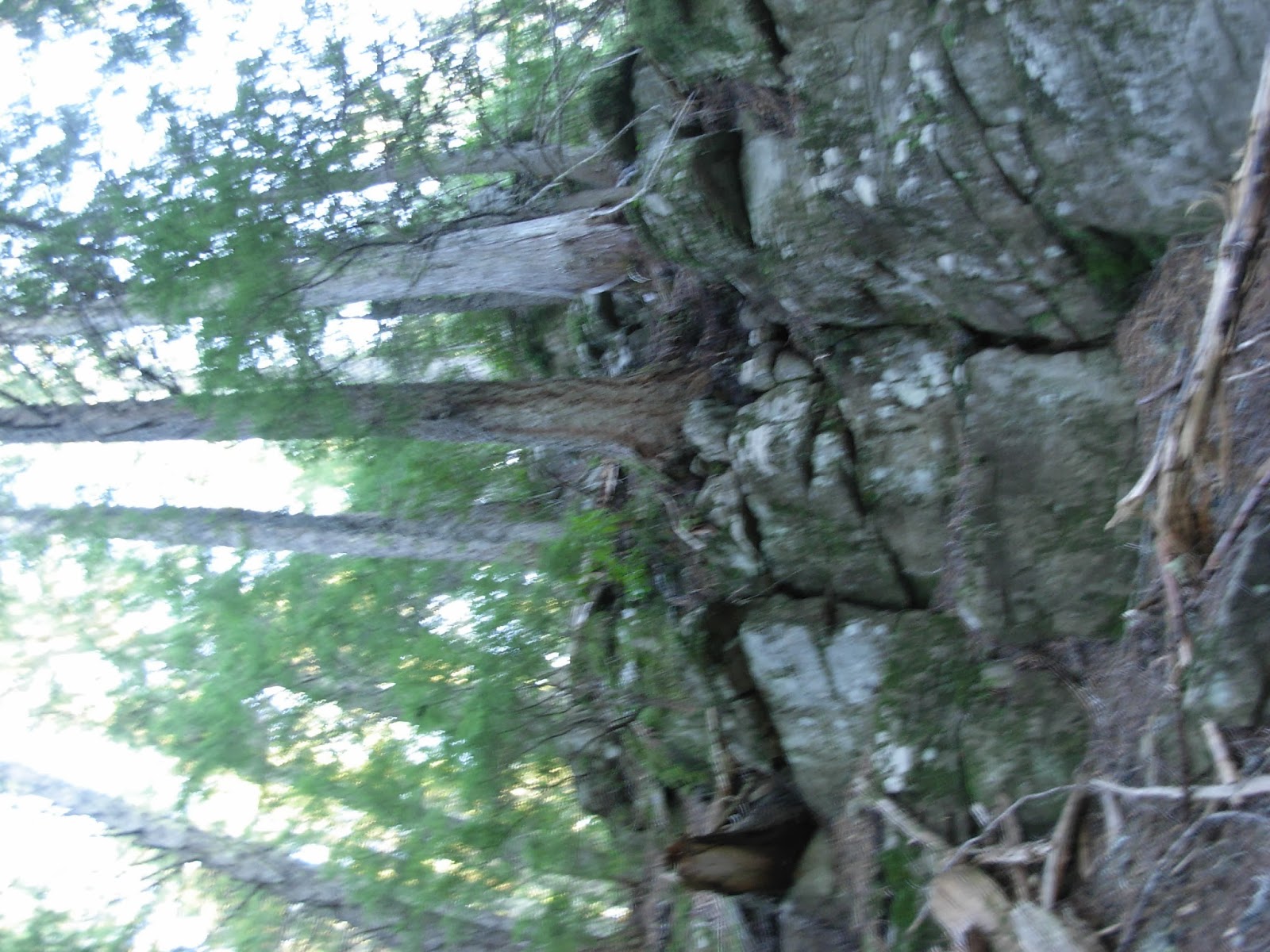Here are some photos of a hike I took near Mt. Hood to show what happens after
thousands of years of succession. Remember that this entire area was formed by volcanic eruptions! Stay tuned for descriptions of each picture and how it relates to succession.
 |
| This is Cedar, my dog, at the beginning of the hike. Here, the ground is flat and soil collects easily, so there is a variety of plant life. Nearby is a loudly rushing river. |
 |
| I took a picture of this map before I left just in case I got lost. If you want to see a detailed map of where I hiked, ask me! |
 |
| This is the beginning of the uphill climb. Rather than going straight up the hill, the trail has "switchbacks" that zig-zag up the hill. You can see the slope of the hill! |
 |
| I still can't figure out what happened to this tree. It's far too high up the hill to be a beaver. Those aren't axe or chainsaw marks. What do you think? |
 |
| This is a fern, a late colonizer plant. They come in after the lichens and mosses. |
 |
| Here you can see the slope of the hill again. The plants have nearly overtaken the trail! Remember that this entire area was once the site of a massive volcanic eruption. After thousands of years, a forest has grown. Think about what it would take for the land to be able to support 100 foot trees! Their roots have to go deep into the soil to hold them up in the winds that blow through in the winter. |
 |
| This is a Douglas Fir cone. Look for the little "mouse tails" poking out of the scales. Douglas Fir loves a good disruption, especially fire. After a fire, the cone opens, spreading seeds to regrow. |
 |
| This is a lichen. Lichen is actually two different organisms, an algae and a fungus. The algae makes food from the sun and the fungus provides a structure for the algae to grow on. This is called a symbiotic relationship. |
 |
| Another lichen. |
 |
| Lichen. The light side is the algae. It collects sunlight. The dark side is the fungus. It gives the algae a place to grow. |
 |
| This lichen has attached itself to a tree branch. |
 |
| More lichen. These organisms are important to succession because they help break down the rocks so other plants can grow. |
 |
| Scat. (That's poop!) This is what's left of somebody's dinner-- mostly fur. This is probably coyote poop. |
 |
| I had to flip the scat over to see if there was anything identifiable. Just fur. |
 |
| This looks like a cement bunker. I see a lot of these when I hike around the coast. The army built them as lookouts during World War II. |
 |
| It's not a cement bunker! It's actually a very large rock. Remember that this entire area was formed by volcanic eruption. This is either a rock that was pushed up out of the earth, or fell to the earth from an eruption. Lower down, it could have been pushed along by a glacier. |
 |
| Looking up at the rock, you can see the moss growing. Somehow, the moss's roots manage to hold onto the smooth surface of the rock. As the moss grows, its roots slowly break up the surface of the rock. |
 |
| Over time, materials collect in the moss, forming the beginning of a layer of soil. In a hundred years, this rock will be covered in a layer of soil deep enough to support larger plants. |
 |
| At 4200' I finally found snow! This is taken in January. Since there is very little snow pack, it will likely be a very dry summer. |
 |
| This is the view from 4200' looking south. |
 |
| Human beings can serve a role in the cycle of succession. In this case, a chainsaw was used to clear the trail. By cutting the tree into smaller pieces, the ecosystem was changed. It may be helpful to some species but harmful to others. |
 |
| Mt. St. Helens looking over Lolo Pass. Here you can see succession both up close and far away. Up close, you can see how trees have covered a land that was once destroyed by the eruption of Mt. Hood. Far away, you can see Mt. St. Helens without its top, the result of the eruption of 1980. |
 |
| Alpine plants (plants that grow at high altitudes) somehow manage to survive after being buried in the snow for half of each year. |
 |
| This begins a series of view pictures taken from 4500'. |
 |
| Looking down on Highway 26 and above the town of Rhododendron. |
 |
| Another picture of Mt. Hood. I never get tired of these pictures! |
 |
| Proof of my success. Notice the elevation: 4495'. (Okay, I lied about being 4500', unless you consider that this is sitting at my feet and I'm 6' tall. Then I can claim 4501'!) |





















































No comments:
Post a Comment